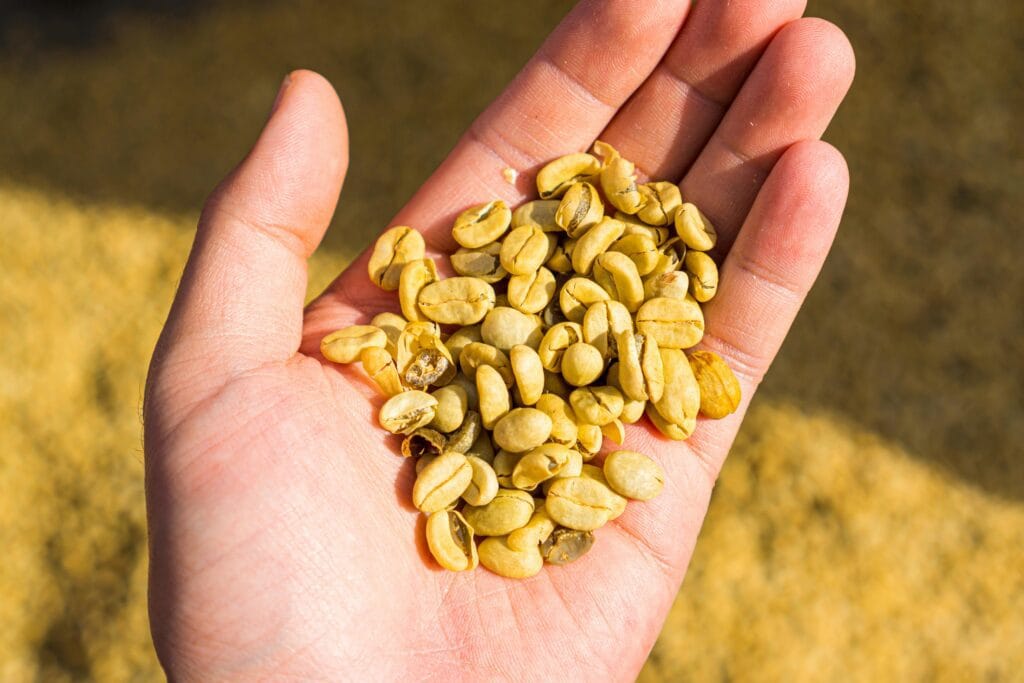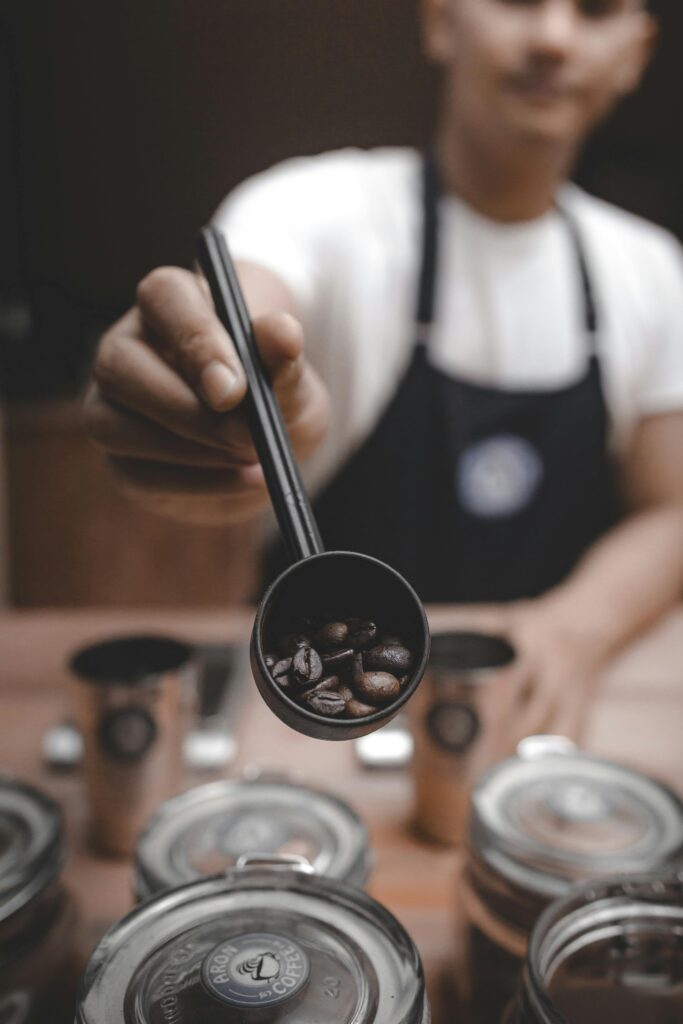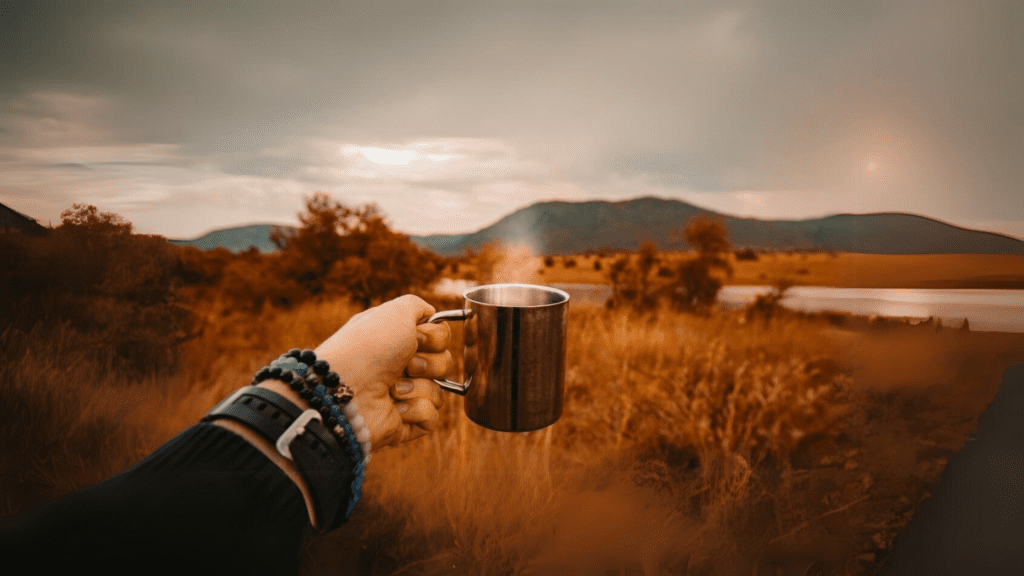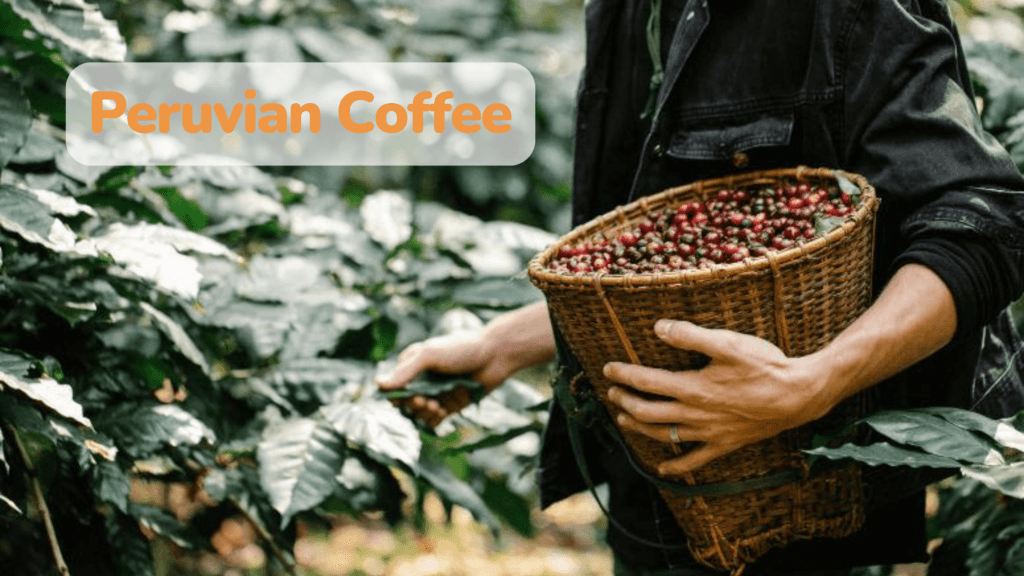If you’re a coffee lover, you may wonder how to choose the right coffee beans for your taste. With so many options available, it can be confusing to figure out which coffee beans are best for you. This guide, based on coffee market research, will help you understand what to look for when buying coffee beans and simplify the process of selecting your ideal cup.
Table of Contents
Toggle1. Know Your Coffee Flavors and Origins
One of the most important things to know when learning how to choose the right coffee beans is that different beans come from different countries, and each has its own unique flavor profile. The location where coffee is grown has a big impact on how it tastes.
For example:
- Ethiopian coffee typically has fruity and floral flavors.
- Colombian coffee is known for its smooth and sweet taste.
- Sumatran coffee often carries earthy and spicy notes.
When shopping for coffee, consider where the beans are from and what flavor profiles they offer. Knowing the origin can help you pick the beans that best match your preferences.
In fact, coffee is grown in over 70 countries, and Arabica beans account for around 60% of the world’s coffee production. Arabica is often considered higher quality, while Robusta makes up the other 40% and is known for a stronger, more bitter flavor.

Arabica beans make up about 60% of global coffee production and are known for their smooth, nuanced flavors compared to the stronger, more bitter Robusta beans.
2. Roast Levels: Light, Medium, or Dark?
When figuring out how to choose the right coffee beans, many people look at the roast level—light, medium, or dark. However, these labels can be misleading, as they vary between brands. For instance, a medium roast from one roaster might taste more like a dark roast from another.
Instead of relying only on the roast level, focus on the flavor notes listed on the bag. If you prefer chocolate or nutty flavors, a medium roast might suit you. If you enjoy fruity or bright flavors, try a light roast. Understanding these key details will help you pick the right coffee beans.
Think of it like choosing a car. You wouldn’t buy a car just because of its color—you’d also consider the make, model, and features. Similarly, with coffee, it’s important to look beyond roast levels and consider other factors like flavor notes and origin.
3. Try Single-Origin Coffee
If you’re new to coffee or want to develop a better understanding of flavors, single-origin coffee is a great place to start. Single-origin means the beans come from one specific region or farm, which gives them a consistent and distinct flavor. It’s a great way to taste the unique characteristics of a particular area.
For example:
- A single-origin Ethiopian coffee may have bright, fruity, and citrusy flavors.
- A single-origin Colombian coffee might offer sweeter caramel or nutty tones.
By exploring single-origin coffee, you’ll quickly discover what flavors you like, making it easier to decide which coffee beans to buy.


4. Freshness Is Key
Freshness is critical when learning how to choose the right coffee beans. Coffee beans start to lose their flavor shortly after roasting, so always check the roast date on the bag. Fresher beans will always provide a better tasting cup of coffee.
Look for beans that were roasted within the last week or two. Research shows that coffee starts losing its peak flavor around 15 days after roasting, so avoid beans that have been sitting on shelves for months.
5. Understand Processing Methods: Washed vs. Natural
When choosing coffee beans, the processing method plays a significant role in the final taste. The two main methods are washed and natural:
- Washed coffee beans have the outer fruit layer removed before drying, resulting in a clean, crisp flavor.
- Natural coffee beans are dried with the fruit still attached, which often gives the coffee a more complex, fruity flavor.
Knowing these methods will help you choose the beans that align with your flavor preferences.
A great cup of coffee starts with the right beans—choose wisely, brew better.
Ahmed Rimon
6. Do a Coffee Tasting (Cupping)
If you’re trying to learn how to choose the right coffee beans, one of the best ways to discover what you enjoy is by tasting different coffees side by side. Buy two different types of coffee, such as a light roast and a dark roast, and brew them at the same time. This will allow you to compare the flavors and decide which one you prefer.
This method, called “cupping,” is used by professionals to evaluate coffee beans, but you can easily replicate it at home to better understand your coffee preferences.
7. Check for Sustainability and Ethics
As you continue learning how to choose the right coffee beans, you may want to consider sustainability and ethical sourcing. Look for certifications like Fair Trade or Direct Trade, which ensure that farmers are paid fairly and sustainable farming practices are used.
Choosing ethically sourced coffee not only supports fair labor but also tends to result in higher-quality beans.
8. Price vs. Quality: What to Expect
When it comes to how to choose the right coffee beans, it’s important to consider the balance between price and quality. You don’t have to spend a lot to get good coffee. A bag priced between $15 to $25 from a local roaster often offers excellent quality.
High-priced beans, like those costing $75 or more, usually come from rare processes or limited batches, but they aren’t necessary for a great cup of coffee. On the other hand, cheaper coffee priced below $10 tends to be mass-produced and often lacks flavor and complexity.
A Quick Guide to Choosing the Right Coffee Beans
Learn how to choose the right coffee beans by understanding key factors like origin, roast, freshness, and price. Find the perfect flavor for your brew!
| Criteria | Details |
|---|---|
| Coffee Origin | – Ethiopian: Fruity, floral flavors – Colombian: Smooth, sweet – Sumatran: Earthy, spicy |
| Bean Types | – Arabica: 60% of global coffee, smoother flavor – Robusta: Stronger, more bitter, higher caffeine |
| Roast Levels | – Light Roast: Bright, fruity notes – Medium Roast: Balanced, nutty flavors – Dark Roast: Bold, rich |
| Processing Methods | – Washed: Clean, bright taste – Natural: Fruity, complex flavor |
| Freshness | Coffee loses peak flavor 15 days after roasting—check for roast dates and buy recently roasted beans |
| Price Range | – $15-$25 for quality specialty coffee – Higher-priced beans often come from rare varieties or limited supply |
| Ethical Labels | Look for Fair Trade or Direct Trade to ensure ethical sourcing and better quality |
Coffee beans lose peak flavor about 15 days after roasting, so always check the roast date to ensure freshness for the best-tasting cup.


Pro Tips on How to Choose the Right Coffee Beans: Dos and Don’ts
Learn how to choose the right coffee beans with these expert tips. Find out what to do and avoid for the best flavor, freshness, and quality in your coffee.
| Do | Don’t |
|---|---|
| Check the roast date for freshness | Don’t buy old coffee sitting on shelves for months |
| Try single-origin beans to explore flavors | Don’t rely solely on roast level (light, medium, dark) for taste |
| Buy whole beans and grind before brewing | Don’t buy pre-ground coffee if you want the best flavor |
| Explore different origins like Ethiopian, Colombian, or Sumatran coffee | Don’t stick to one origin without experimenting with others |
| Focus on flavor notes (chocolatey, fruity, nutty) when selecting coffee | Don’t ignore the flavor descriptions provided by the roaster |
| Choose ethically sourced coffee with Fair Trade or Direct Trade labels | Don’t overlook sustainability if you care about ethical practices |
| Experiment with coffee cupping to compare tastes | Don’t assume price always means better quality—find balance between price and taste |
FAQs
1. What’s the best coffee roast for beginners?
For beginners, a medium roast is a great starting point. It strikes a balance between the boldness of a dark roast and the brightness of a light roast. Medium roasts also tend to have flavors that are easy to enjoy, such as chocolate and nutty notes.
2. Is it better to buy whole beans or pre-ground coffee?
It’s usually better to buy whole beans and grind them just before brewing. This keeps the beans fresher for longer and allows you to control the grind size, which can affect the flavor. Pre-ground coffee loses its freshness more quickly.
3. How do I know if coffee beans are fresh?
Check the roast date on the bag. Coffee beans are freshest within two weeks of roasting, so look for beans roasted recently. Avoid coffee without a roast date, as it’s harder to tell how fresh it is.
4. What’s the difference between Arabica and Robusta beans?
Arabica beans are considered higher quality and have a smoother, more complex flavor. Robusta beans are stronger, more bitter, and contain more caffeine. Robusta is often used in espresso blends and instant coffee.
5. Why do coffee prices vary so much?
Coffee prices depend on factors like the quality of the beans, where they are grown, and how they are processed. Specialty and single-origin coffees are often more expensive because they require more care during production. Mass-produced coffee, found in many supermarkets, is usually cheaper but often has a lower flavor quality.
Conclusion
Understanding how to choose the right coffee beans doesn’t have to be complicated. By focusing on key factors like flavor, roast level, freshness, and processing methods, you can easily find the best coffee beans for your taste. Don’t be afraid to try different varieties and explore what works for you. With these tips, you’ll be well on your way to finding the perfect coffee beans to enjoy every day!
By optimizing these aspects, you’ll become more confident in your coffee choices and get the most out of every cup.







